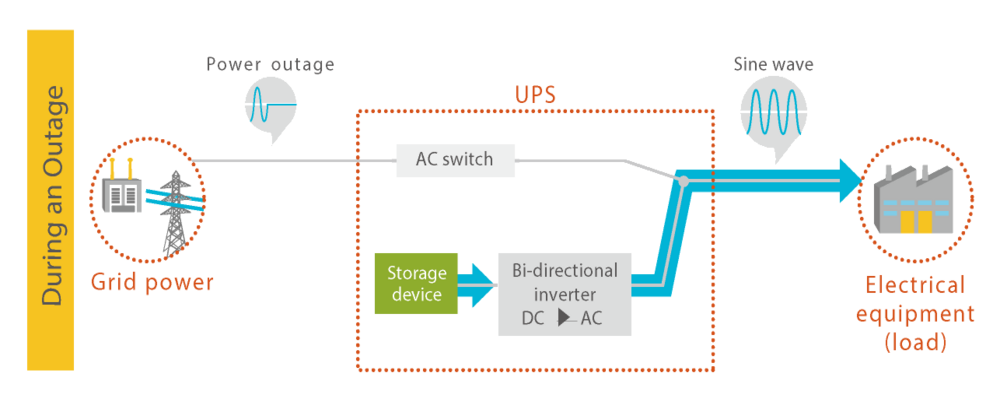



-
- Free Word Search




There are three types of UPS power supply methods. In lessons 5 and 6, we explained Passive Standby and Double Conversion Online. This time, we will learn about the third method, Parallel Processing.
Parallel Processing is a method in which Inverter are always operated in parallel and power waveforms are corrected at high speed.


SANYO DENKI 's Parallel Processing supplies commercial power as is under normal circumstances, but it is equipped with a high-speed AC switch, which prevents noise from the commercial power supply and backflow of power during a power outage. Since it does not use a switch like Passive Standby, it switches to Inverter power supply without momentary interruption.
The bidirectional Inverter has a built-in capacitor, so surges of less than half a cycle are compensated for by the power from the built-in capacitor. Since the power of the storage device is not used, the wear on the storage device's life due to the number of charge/discharge cycles is also reduced.
Furthermore, Parallel Processing has an active filter function that prevents harmonics from flowing into the commercial power supply. The bidirectional Inverter detects harmonics from electrical equipment and sends the opposite waveform to prevent the harmonics from affecting other electrical equipment.
SANYO DENKI 's Parallel Processing consumes extremely little power and allows switching without any interruption. In addition, since the current does not pass through Inverter under normal circumstances, you can select the capacity of the UPS without worrying too much about inrush current. It is no exaggeration to say that it has the best features of both Passive Standby and Double Conversion Online.
Although it is also known as Parallel Processing, SANYO DENKI 's Parallel Processing is patented for its unique control method, and is a highly reliable power supply method that achieves low power consumption while allowing switching without any interruption.
So far, we have learned about three types of power supply methods for UPS. It is common to select a UPS taking into consideration power outages and other power troubles, as well as operating costs. However, in order to further reduce the risk of power outages, you can also choose a two-line power supply in your contract with the power company. In this case, a "momentary power outage (instantaneous power outage) and momentary voltage drop (instantaneous voltage drop) countermeasure device" may be sufficient.
Written by: Toshiyuki Nishizawa, Senior Sales Engineer, Sales Division, SANYO DENKI CO., LTD.
release date: